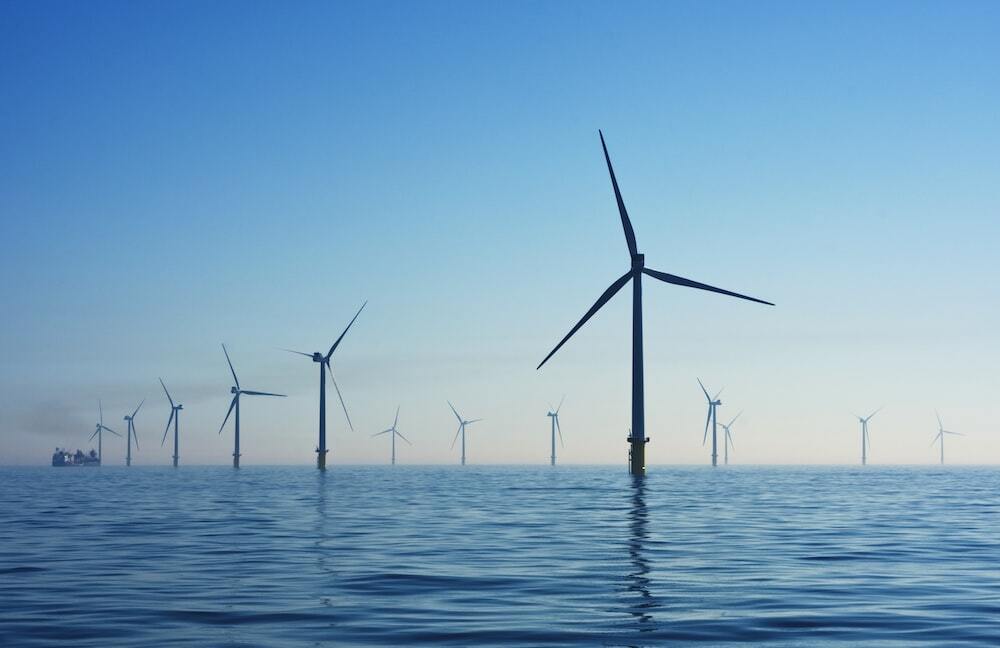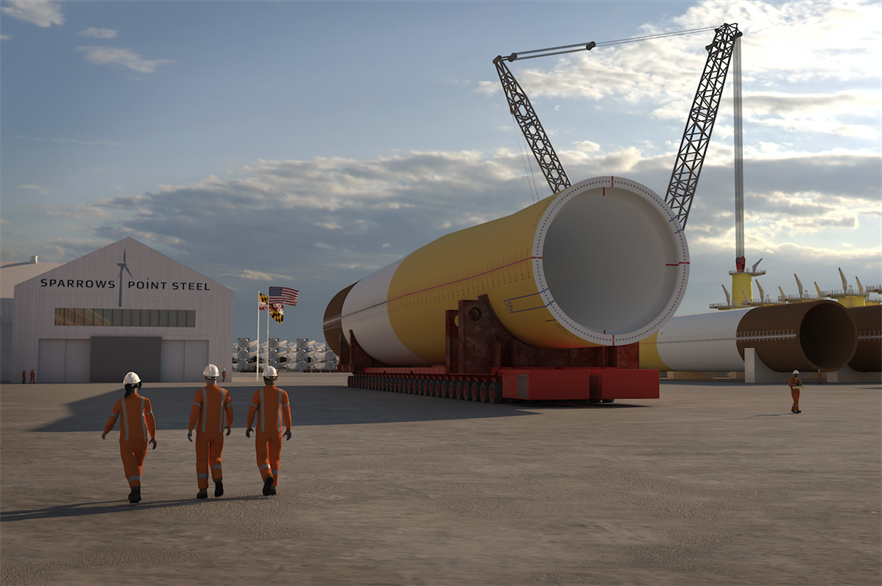[Part 2 of 2]
EV the Perfect Answer?
A driving motivation behind consumers making the switch to EVs is the desire for a positive environmental impact, as the threat of global climate change looms. Yet, it is necessary to recognize that this impact is complex and multi-faceted in nature. As new ‘green’ technologies, products and services emerge as alternatives for consumers and business, it is critical to scrutinize their claims and investigate their true environmental impact. These actions are important in order not to succumb to greenwashing, defined as “the process of conveying a false impression or misleading information about how a company’s products are environmentally sound.”
There are multiple metrics to consider when analyzing an EV’s total environmental impact compared to a gasoline fueled vehicle. The first to consider is the direct tailpipe emissions produced during driving. While tailpipe emissions are eliminated with the use of an EV, upstream emissions must be taken into consideration. The upstream emissions account for emissions costs associated in the production and distribution of both gasoline and electricity. To help consumers calculate comparisons in EV models, the EPA and Department of Energy created the Beyond Tailpipe Emissions Calculator. This calculator computes an EV by model and year, and cross references the total GHG between your ZIP Code, the average electricity mix in the US, and the average new gasoline vehicle. To learn more about the specific energy breakdown of your region, use the EPA’s online Power Profiler interactive tool. In general, energy production supplying Maryland’s grid varies by location and supplier. In 2020, 88% of Maryland’s energy production came from nonrenewable sources. The majority, around 79%, came from nuclear and natural gas plants, with the remainder produced from coal. Maryland’s renewable energy, which accounted for 11% of the total energy used in 2020, is a mix of hydroelectricity, solar power, wind, and biomass.
While at first these statistics may appear to be deterrents to switching to an EV, there are other important considerations and developments to keep in mind. First, the average consumption of non-renewable energy by an EV has less emissions than a gasoline power car. As reported by the U.S. Environmental Protection Agency, even after accounting for non-renewable electricity consumption, EV’s typically produce lower levels of greenhouse gases (GHGs) compared to the average new gasoline car. EV’s are also more energy efficient and typically fare better in the “Well to wheel” efficiency (dependent on powerplant/source), which calculates the efficiency in the entire energy lifecycle, to accurately assess greenhouse gas emissions. This measure considers fuel extraction or energy production, transportation, supply and storage and final consumption by the vehicle. At the same time, it is also worth considering other environmentally friendly transportation options to complement or substitute the use of EVs. These measures include investing in mass transit, bike lanes, alternatives to long commutes and walkable cities.

The energy profile across the United States is changing and EV’s are better equipped to capitalize on both current and future advancements in green energy production. According to Short-Term Energy Outlook from the U.S. Energy Information Administration, the expansion of the renewable energy sector in the U.S. is following a rising trend. In 2022, nationwide electricity generation from renewable sources was 22%, in 2024, that number is expected to climb to 26% and continue to grow. By extension, renewable energy generation from wind and solar sources have lower operating costs than fossil-fuel powered plants. In Maryland, there are promising investments in renewable energy projects, including the construction of offshore wind turbines miles off Maryland and Delaware’s ocean coastline, within the “Maryland Wind Energy Area” lease. Currently, Maryland’s wind production occurs in the mountains of Western Maryland at a production capacity of 191 megawatts. The Maryland’s Offshore Wind Renewable Energy Credit (OREC) Program administered by the Maryland Public Service Commission has approved two rounds of offshore wind capacity leasing to developers U.S. Wind, Inc. and Ørsted U.S. Offshore Wind. According to the Maryland Offshore Wind Overview, the developments in Round 1 and Round 2 (approved on May 11th, 2017, and December 18, 2021 respectively) will have a combined energy capacity of 2,022.5 megawatts or enough to power nearly 600,000 homes. These wind farm projects not only have great potential for clean power, but also have great prospects for economic growth and job creation in Maryland. Years ago, before its closure, Bethlehem Steel at Sparrows Point Baltimore was one of the largest steel producers in the world. Today, the site is undergoing a period of rejuvenation, ramping up production to meet the massive steel demand of the wind turbine project. US Wind is partnering with Haizea Wind Group in management and operation of the site. The 100-acre waterfront location will serve as a logistics hub as well as a long-term monopile production facility for wind turbine production and is “poised to become the best offshore wind heavy logistics and fabrication yard on the East Coast.” In a statement from Maryland Governor Wes Moore, new projects at the Sparrows Point site will lead to the creation of 15,000 jobs. This figure consists of full-time employees needed in construction, O&M jobs, and those in the supply chain. Notably, other leaders in the wind turbine production industry, Ørsted and Crystal Steel opened Maryland’s first steel fabrication center for offshore wind turbines in Caroline County. Ørsted and Crystal Steel’s production also led to job creation on the Eastern Shore, where their components are produced and at Sparrows Point, the site of the turbine’s final assembly. Given the changing nature of American energy production, electric vehicles are a tool, in which we can employ the yields of green energy. This ongoing shift in energy production also has the effect of reducing externalities and social costs resulting from non-renewable energies.

A rendition of Sparrows Point Steel facility. According to US Wind, the monopiles for offshore wind turbine support structures can weigh as much as 5,500,000 pounds each, requiring over 220,000,000 pounds of steel plate.
Subsides and Political Pressures
The expansion of the EV market in the U.S. has the potential to shake up the entrenched subsidy structures for non-renewable energy. According to conservative estimates from the Environmental and Energy Study Institute, the U.S. government provides $20 billion in direct subsidies as well as billions in indirect subsidies to the fossil fuel industry every year. Of these direct subsidies “20 percent [are] currently allocated to coal and 80 percent to natural gas and crude oil.” Across the U.S., far-reaching Federal fossil fuel subsidies cause the pump price, to equate to far less than the real cost of gasoline. In Maryland, this means the real cost of gasoline is substantially higher versus its current $3.80 average pump price (regular August 2023). As a result of these subsidies, our public infrastructure and services suffer millions of dollars lost as well as Maryland jobs. All the while, there is more to the “true price” of fossil fuels and fossil-derived products. According to the Environmental and Energy Study Institute, the “true price” equates to carbon production and pollutants exacerbating the risk of externalities for environmental and public health. These public health impacts include, “asthma, lung disease, bronchitis, cancer, heart attacks, risk to pregnant women, and other chronic respiratory diseases” resulting from “particulate matter, carbon monoxide, sulfur dioxide, ozone, and mercury” produced from fossil fuel combustion. When considering the environmental impacts of fossil fuels, it is also critical to recognize the detriments resulting from externalities such as Hydraulic fracturing, or fracking, coal strip mining, and oil spills. The 1989 Exxon Valdez and 2010 Deepwater Horizon oil spills alone resulted in an immeasurable environmental impact as well as a cleanup cost of $63.6 billion. Ultimately, the U.S. government continues to artificially reduce prices to the detriment of public resources, health, and the environment, while last year ExxonMobil, Shell, Chevron, Total Energies and BP generated record profits. Continuing such a strategy is not a viable long-term solution.
Pushback against such subsidies is culminating from both governance and from market forces. For example, in recent years the Biden Administration has tried to slash such non-renewable energy subsidies. Yet, the move is politically an uphill battle in Congress. Resistance to curbing subsidies was also aggravated by drastic increases in energy prices following the Russian invasion of Ukraine. Nevertheless, there is immense potential for revenue generation by slashing or eliminating non-renewable energy tax breaks. The momentum behind the EV movement in combination with the continual expansion of other renewable technologies has potential to diminish both the demand for subsidies and the strength of lobbying by the fossil fuel industry. By slashing two subsidies alone (one aimed at intangible drilling costs and the other at recovering development costs of declining fossil fuel reserves), the Joint Committee on Taxation has estimated a combined $29.9 billion could be generated over a decade. Within divergence from our dependence on fossil fuels lies the auspicious outcome of heightened pressure and reexamination of non-renewable energy subsidy structures. This can then yield funds available for reallocation towards public works, spurring investment, and generating economic growth.
Ethical Supply Chain
However, one must remember that an EV is a product, with thousands of parts and input materials required for its manufacture. These input materials require corresponding supply chains spanning the globe, leading to a complex web of stakeholders, affected by the environmental and social impacts of the manufacturing process. This impact is something that both business and consumers alike have the responsibility of bringing awareness to. Pertaining to the production of EVs, concerns have been raised about the rare metals needed to produce the vehicle’s battery packs, primarily cobalt. Cobalt is a key material used to produce lithium-ion batteries, which are commonly found in consumer electronics including smartphones. Much of the world’s supply of this precious mineral lies in the heart of Africa, within the Democratic Republic of the Congo. This region is notorious for poorly regulated mining operations and human rights violations. Responsively, consumers, media and other watchdog organizations have put pressure on EV manufacturers to practice vigilance within their supply chains and stifle sourcing from unethical mines. Such a response can be seen in Tesla’s transparency commitments in both internal auditing of mines and allowing third-party auditors access.
Government has also played a role in promoting EVs to be a more ethical product. The recent Inflation Reduction Act (IRA) contains stipulations to incentivize sourcing battery material from the U.S. or one of its free trade partners in the form of a tax credit, benefitting effectively regulated mines by promoting them to paying customers. Moreover, the Customs Trade Partnership Against Terrorism (CTPAT) program incentivizes members to take proactive steps in their material sourcing against prohibited labor forms. The program mandates that companies ensure “goods imported into the U.S. were not mined, produced or manufactured, wholly or in part, with prohibited forms of labor, for example — forced, imprisoned, indentured, or indentured child labor.” U.S. Customs and Border Protection cites that participation in CTPAT gives certified partners expedited travel for goods and access to supply chain resources. Examples of incentives include access to the Free and Secure Trade (FAST) Lanes, which run through land borders and front of the line inspections. Currently, auto manufacturers such as Tesla, Ford Motor Co., and General Motors are members. Other groups such as the Responsible Business Alliance and Initiative for Responsible Mining Assurance engage EV manufacturers to practice corporate social responsibility in global supply chains. Moreover, the reliance of EV batteries on cobalt may be significantly reduced or even eliminated with advancements in battery technology. Two options that are currently being implemented include cobalt-free lithium iron phosphate batteries and nickel-based batteries. Continual development of these battery technologies leads to higher durability, EV efficiency, affordability, and importantly reduces the reliance on rare metals such as cobalt.
Call to Action
Many critics of switching to electric vehicles are quick to make claims that EV are worse for the climate than gasoline cars because of their power plant emissions and battery manufacturing. Or make sweeping statements that “electric cars are coal-powered cars.” It is important to recognize the truth behind some criticisms and find ways to work towards addressing them. But at the same time there are claims meant to subterfuge and hinder the potential of EV technology. Although electric cars are not the perfect solution that we would like them to be, shifting towards their supporting technology is not just a step in the right direction, but a stride.
Investing in EVs is a worthwhile move, as they are more versatile and able to benefit from growing green technologies and technological innovations compared to traditional vehicles. Today, the pieces are in play to realize the scale of investment needed across the board to make transportation more sustainable. Both federally and in Maryland there are major investments and initiatives with the aim of shifting towards wide scale sustainability. Such an example is “Maryland’s Renewable Portfolio Standard,” requiring half of all electricity sales to be renewably sourced by 2030. Furthermore, Governor Moore has put plans into action to power nearly three million homes through renewable energy and achieve 100% clean energy for the state by 2035. At the national level, billions in investment for green technology and actions such as the immediate goal of a national network of 500,000 electric vehicle chargers pave the way for a more aggressive federal goal of net-zero emissions by 2050. Maryland now is the time to make the EV switch and turn over a new leaf (Nissan’s LEAF is a competitive option with a per charge 226-mile range). The decision makes sense for your wallet, is compatible with your commute and most importantly a contribution towards alleviating the effects of climate change.
References:
“Assessment of Light-Duty Electric Vehicle Costs and Consumer Benefits in the United States in the 2022–2035 Time Frame.” International Council on Clean Transportation, https://theicct.org/publication/ev-cost-benefits-2035-oct22/.
Barriers to Electric Vehicle Adoption: The 4 Key Challenges. https://www.exro.com/industry-insights/barriers-to-electric-vehicle-adoption-in-2022.
Beirne, Samuel. Maryland Offshore Wind Overview.
Bethlehem Steel. https://www.discoveramericablog.com/post/2019/08/18/bethlehem-steel.
California Moves to Accelerate to 100% New Zero-Emission Vehicle Sales by 2035 | California Air Resources Board. https://ww2.arb.ca.gov/news/california-moves-accelerate-100-new-zero-emission-vehicle-sales-2035.
CTPAT: Customs Trade Partnership Against Terrorism | U.S. Customs and Border Protection. https://www.cbp.gov/border-security/ports-entry/cargo-security/CTPAT.
Fact Sheet | Fossil Fuel Subsidies: A Closer Look at Tax Breaks and Societal Costs (2019) | White Papers | EESI. https://www.eesi.org/papers/view/fact-sheet-fossil-fuel-subsidies-a-closer-look-at-tax-breaks-and-societal-costs.
“Fig. 4. Well-to-Wheels Efficiency Comparison between Various.” ResearchGate, https://www.researchgate.net/figure/Well-to-wheels-efficiency-comparison-between-various_fig4_224712974.
Frequently Asked Questions (FAQs) – U.S. Energy Information Administration (EIA). https://www.eia.gov/tools/faqs/faq.php?id=10&t=5.
Gas Tax Holiday. https://www.marylandtaxes.gov/gas-tax-holiday/.
Governor Moore Announces Major Offshore Wind Energy Initiatives During International Forum in Baltimore – Press Releases – News – Office of Governor Wes Moore. https://governor.maryland.gov/news/press/pages/Governor-Moore-Announces-Major-Offshore-Wind-Energy-Initiatives-During-International-Forum-in-Baltimore.aspx.
“Here’s How Much Oil Companies Made in Profits Last Year.” CNBC, https://www.cnbc.com/video/2023/03/03/oil-companies-made-200-billion-in-profits-in-2022.html.
House, The White. “FACT SHEET: Biden-Harris Administration Announces New Standards and Major Progress for a Made-in-America National Network of Electric Vehicle Chargers.” The White House, 15 Feb. 2023, https://www.whitehouse.gov/briefing-room/statements-releases/2023/02/15/fact-sheet-biden-harris-administration-announces-new-standards-and-major-progress-for-a-made-in-america-national-network-of-electric-vehicle-chargers/.
How Much Electricity Does It Take to Charge a Tesla? — Lectron EV. https://ev-lectron.com/blogs/blog/how-much-electricity-does-it-take-to-charge-a-tesla.
Maryland Energy. https://msa.maryland.gov/msa/mdmanual/01glance/html/energy.html.
Morris, James. “Tesla’s Shift To Cobalt-Free Batteries Is Its Most Important Move Yet.” Forbes, https://www.forbes.com/sites/jamesmorris/2020/07/11/teslas-shift-to-cobalt-free-batteries-is-its-most-important-move-yet/.
“OC Supports Green & Unseen Wind Farms.” Town of Ocean City, Maryland, https://oceancitymd.gov/oc/oc-supports-green-unseen-wind-farms/.
Ohnsman, Alan. “U.S. EV Charging Network Gets $2.5 Billion Boost From Biden Administration.” Forbes, https://www.forbes.com/sites/alanohnsman/2023/03/14/us-ev-charging-network-gets-25-billion-boost-from-biden-administration/.
“Potential Economic Development Benefits from B Corps- Complete Un-Desktopped.Pdf.” Google Docs, https://drive.google.com/file/d/0B6ZFV2pjfkheeGJTZHBTVnhhMHc/view?resourcekey=0-CIQ4RP8I8fAsl2kSZ1g_bQ&usp=embed_facebook.
Reuters. “Factbox: Biden Budget to Target U.S. Fossil Fuel Subsidies.” Reuters, 9 Mar. 2023. www.reuters.com, https://www.reuters.com/business/energy/biden-budget-target-us-fossil-fuel-subsidies-2023-03-09/.
Sanguesa, Julio A., et al. “A Review on Electric Vehicles: Technologies and Challenges.” Smart Cities, vol. 4, no. 1, 1, Mar. 2021, pp. 372–404. www.mdpi.com, https://doi.org/10.3390/smartcities4010022.
Short-Term Energy Outlook – U.S. Energy Information Administration (EIA). https://www.eia.gov/outlooks/steo/report/elec_coal_renew.php.
Sparrows Point Steel. https://uswindinc.com/sps/.
“The Challenge of Sourcing EV Battery Minerals in an ESG World.” IHS Markit, 8 Mar. 2023, https://www.spglobal.com/mobility/en/research-analysis/electric-vehicle-batteries-mining-esg-ceraweek.html.
“The Chinese Auto Industry at a Crossroads.” IESE Insight, https://www.iese.edu/insight/articles/china-auto-industry-crossroads/.
These 21 Companies Are Switching to Electric Vehicle Fleets. 26 Oct. 2021, https://www.perillon.com/blog/21-companies-switching-to-electric-vehicle-fleets.
“US Wind – Fueling Our Future, Naturally.” US Wind, https://uswindinc.com/.
Weisbrod, Katelyn. “Environmental Advocates Call on Gov.-Elect Wes Moore to Roll Back State Funding for Fossil Fuel Industry.” Inside Climate News, 25 Nov. 2022, https://insideclimatenews.org/news/25112022/wes-moore-maryland-fossil-fuels/.
“What Is Greenwashing? How It Works, Examples, and Statistics.” Investopedia, https://www.investopedia.com/terms/g/greenwashing.asp.
“ZEV.” Department of the Environment, https://mde.maryland.gov/programs/air/MobileSources/Pages/default.aspx.
About the Author:

Mike Devlin-Tremble, Green Business Certification Associate
Mike is from Pasadena, Maryland and graduated from the American University in Washington D.C. with a degree in International Relations and a minor in German language. He grew interested in sustainable business after conducting Capstone research involving energy efficiency and independence. At Bethesda Green, Mike is currently helping to relaunch Montgomery County’s Business Certification Program and encourage green business practices. In his spare time, Mike enjoys kayaking on the Chesapeake Bay, skiing, and hiking.





